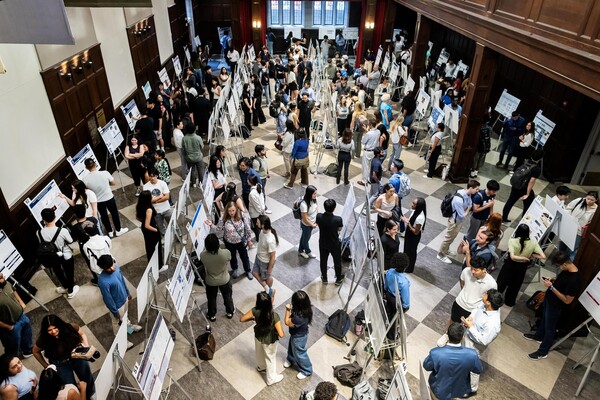
Image: Mininyx Doodle via Getty Images
Who would have thought impotence could ever be so chic? Once a subject to be discussed only in hushed tones, the release of the erectile dysfunction drug Viagra has made impotence a hot topic.
Impotence affects half of the male population over 40, according to a 1994 study. Now it seems a promising new treatment may be underway.
David Christianson, Edmund and Louise Kahn Professor of Chemistry, and three collaborators have published a paper in the Nov. 1 edition of the journal Nature Structural Biology on a potential impotence drug that may work where Viagra does not.
Nitric oxide, the researchers write, signals smooth muscle relaxation, which is necessary for erection. However, an enzyme called arginase prevents the manufacture of the nitric oxide. Arginase breaks down an amino acid, L-arginine, that plays a key role in the synthesis of nitric oxide. The researchers’ innovation was to design a molecule that binds to arginase, therefore halting the breakdown of L-arginine.
“All the talk of Viagra made me wonder if arginase was present in penile tissue,” said Christianson, the primary investigator on the study. He began looking into the erectile dysfunction application of an arginase inhibitor last year.
Christianson explained that the researchers’ discovery “allows the corpus cavernosum, the muscular spongy tissue in the penis, to fill with blood.”
It may help men with particularly stubborn erectile dysfunction. Viagra does not work in three out of 10 men, according to Pfizer, its manufacturer. Viagra, Christianson explained, works later in the erection process than does their treatment.
“Viagra won’t help if you don’t have enough nitric oxide to begin with,” he said. The researchers’ drug candidate insures that nitric oxide is in sufficient supply. It may therefore work both alone and in combination with Viagra to combat impotence.
Christianson credits J. David Cox, a graduate student in his department and the first author of the paper, with performing the intricate X-ray crystallography work that allowed the researchers to see the structure of the inhibitor. Noel N. Kim and Abdulmaged M. Traish, urologists at the Boston University School of Medicine, performed studies on rabbit and human penile tissue to determine the effect of the arginase inhibitor on nitric oxide production and smooth muscle relaxation.
Christianson cautions that further testing and clinical trials will be needed before the drug is ready for market. He estimates that it may take five to seven years for FDA approval.
Christianson, the winner of the 1999 Pfizer Award in Enzyme Chemistry given by the American Chemical Society (the award was unconnected to his erectile dysfunction research), said the discovery of this potential new drug was secondary to his ongoing research on the structural chemistry and biology of metalloenzymes. The scientist, who is originally from North Attleboro, Mass., has been studying arginase for 10 years.
“My first and foremost priority is basic science,” Christianson said. “It is important to appreciate and fund basic science because of unexpected discoveries, such as our fortuitous decision to look at penile erection.”
Sono Motoyama

Image: Mininyx Doodle via Getty Images

nocred

Image: Pencho Chukov via Getty Images

Charles Kane, Christopher H. Browne Distinguished Professor of Physics at Penn’s School of Arts & Sciences.
(Image: Brooke Sietinsons)